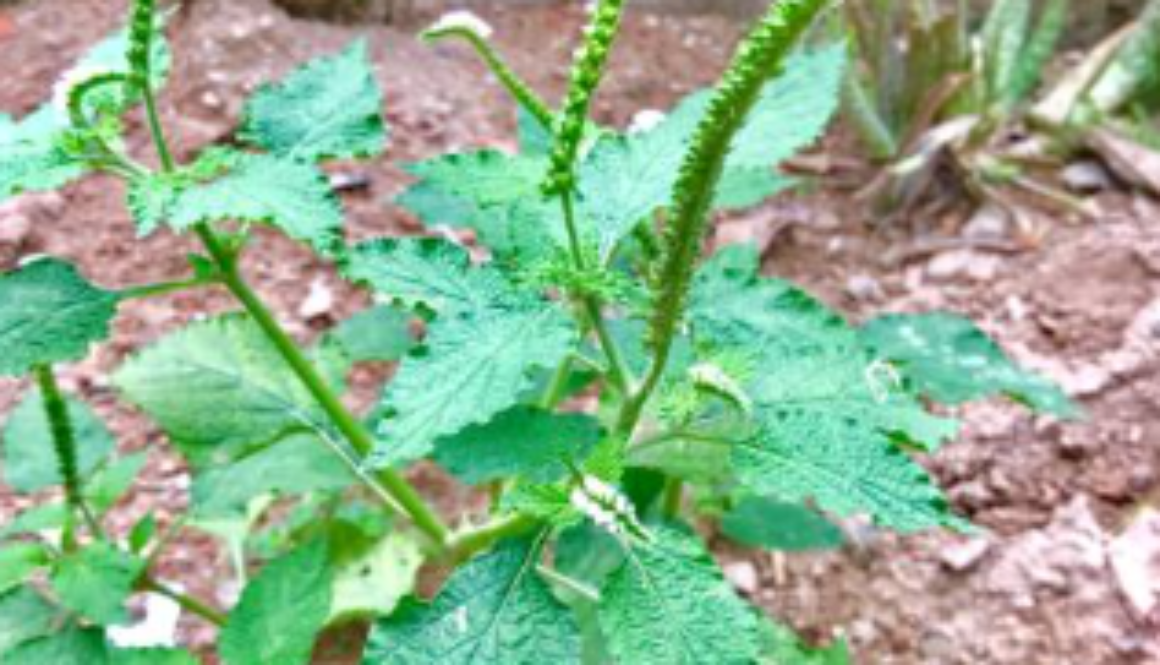Undo kanto
It is a common weed under shade throughout up to 1000 m elevation in India. An erect, stiff annual herb, up to 1 m tall, branching near the base. Stem angular, ribbed, thickened, light green or pink covered with short, stiff and slightly rough hair. Leaves simple, elliptic or obovate, acuminate or rounded at apex and glabrous. Flowers greenish white, small arranged on terminal 1 axillary spikes. Seeds light brown, sub cylindrical, pointed at apex and rounded at the base. Flowering and fruiting in August to December.
Part used: Whole plant
Usage: Its ash having high proportion of potash, acts as antacid. A bath with whole plant decoction relieves itching in skin diseases. Powder of whole plant cures spleen enlargements. Decoction of plant is diuretic while its ash is used in cold and cough. Leaves are used to treat asthma. Decoction of powdered leaves useful in the early stages of diarrhoea and dysentery. The juice of leaves is valuable in stomach disorders, kidney problems and is also applied externally over cuts and wounds. Its powdered root is very useful in pneumonia and cholera. Paste of the root is very beneficial in eye disorders (Opthalmia and opacity of the cornea). Root paste with cold water is given to stop bleeding after abortion. Root powder given as an antidote in dog bite, scorpion sting and rat bite. Root paste is applied on the abdomen for facilitating easy and painless delivery. Seeds mixed with milk are used as tonic.
Agrotechniques : Propagation through seeds. It is normally a weed and hence collected from nature. No specific agro techniques are available.

